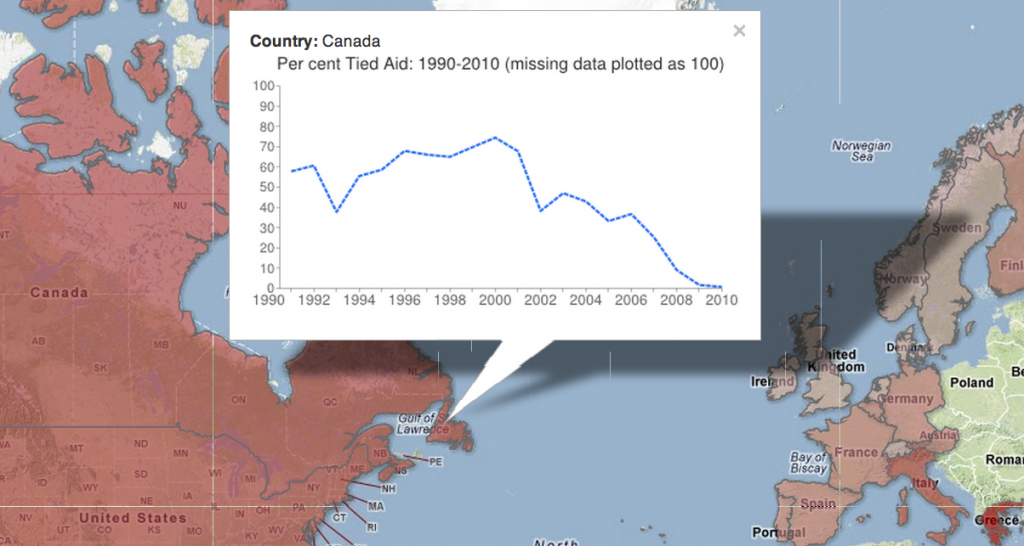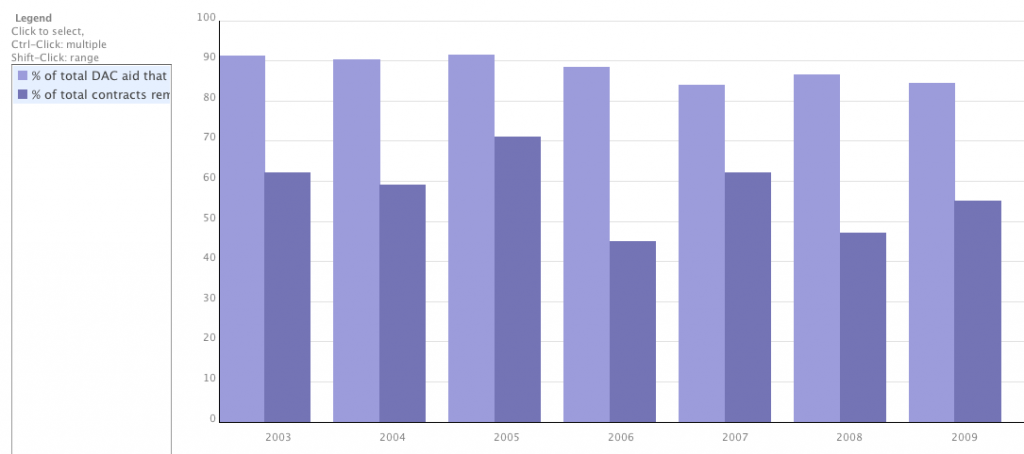When foreign development aid comes with strings attached—forcing recipients to spend it on goods and services from donor country—it can double the time it takes the help to arrive. Children have died awaiting such “tied” aid, which also can increase costs by more than 30 per cent.
Understandably, these policies have led to sharp criticism by activists. The decision by the U.S. Agency for International Development (USAID) to untie it’s donations was big news.
To place this decision in context, we plotted data from the OECD showing trends in tied-aid over the past two decades.
You can see Canada’s steady efforts to untie aid since a 2001 meeting of donor countries resolved to end tied aid. Note the U.S.’s lag in following suit and its failure to report tied-aid data for a decade starting in 1995. The gap covers the period when global aid tying policies shifted, and when the US channeled huge sums to reconstruction efforts in Iraq and Afghanistan. Most of this aid was tied.
We collapsed across the EU countries because their policies were similar over the years. Our map allows exploration of some the policy variability that does exist.
Each nation’s average amount of tied aid over 1990 to 2010 is plotted. When you click on a country, its data is shown on a line chart illustrating that nation’s history of tied aid.
Untying aid does not necessarily achieve the desired impact, as the article mentions. For instance, the U.K. had untied nearly 77 per cent of its aid by 2009, yet the vast majority of its procurement contracts are still signed with U.K. companies.
Data from an OECD report [link] allowed us to examine this continuing barrier to getting more development aid spent in recipient countries.
Some of the nations with the highest amount of aid reported as “untied” still end up using companies within their borders to fulfill the majority of their aid contracts. Simply because less aid is coming with strings attached does not translate into investment in the poorest nations of the world.
Finally, food aid, pharmaceutical aid and automobiles were all excluded from the new agreement for USAID. Data at this level of detail is not readily available, but would make for a good target for a Freedom of Information Act request. It is interesting to note that these are all among the most powerful political lobbies in the U.S.



